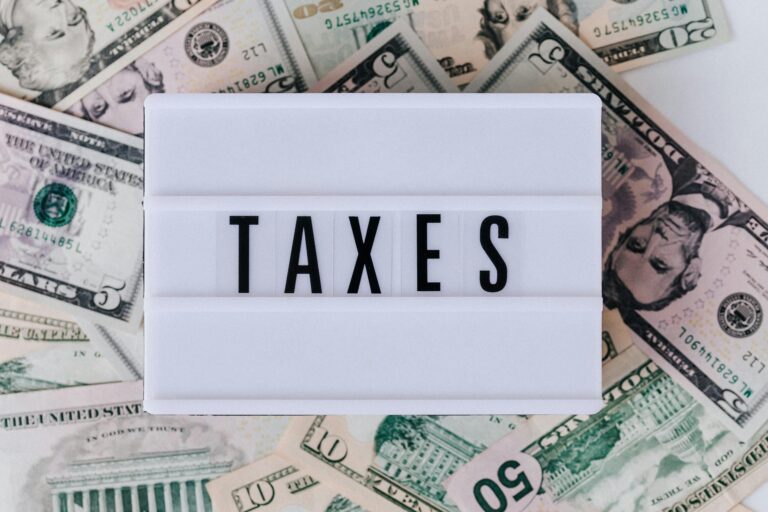When most people think of dividends, investment accounts and stocks come to mind. But did you know you can also earn dividends on certain types of life insurance?
Dividends can be a profitable and practical way to grow your wealth. In this article, we’ll explain life insurance dividends and which types of policies earn them. Plus, learn the best ways to use life insurance dividends for tax-advantaged wealth and how to optimize your policy for maximum earning potential.
WHAT ARE LIFE INSURANCE DIVIDENDS & HOW ARE THEY CALCULATED?
To understand life insurance dividends, it helps to understand insurance premiums. Dividends are essentially a return of premiums paid and are considered an “overpayment” by the IRS.
When you buy a life insurance policy, you pay a monthly, quarterly, or annual premium to cover the cost of your insurance. This fee covers the face value of the policy—the death benefit—as well as administrative costs. If you have a cash value life insurance policy, the remainder of your premium goes toward the policy’s cash value.
The cost of life insurance varies and is calculated based on a number of factors including the face value of the policy, the type of insurance policy, the age and health of the policyholder, and any additional policy riders that are purchased. These factors determine the likelihood your insurance company will pay out a death benefit in any given year the policy is in force, as well as how much the insurance company will owe your beneficiary.
Each year, your insurance company assesses how many claims it actually paid out and how its own invested assets performed, as well as its operating costs and revenue. If the insurance company made more than the amount it paid out in claims, the insurance company will pay dividends to its policyholders.
The exact amount of dividends distributed to you depends on your insurance policy and the dividend scale interest rate outlined within your policy. How long the policy has been in force, its cash value, and the amount paid in premiums play a role—long standing policies and/or high cash value policies earn more dividends than newer or smaller policies.
WHAT TYPES OF LIFE INSURANCE PAY DIVIDENDS?
Not all insurance policies pay dividends. In order to be eligible, you must have a participating policy. Participating policies include permanent life insurance policies, like whole life insurance, universal life insurance, or long-term disability insurance, that are underwritten through a mutual insurance company where you policyholders own a portion of the company.
Dividends are usually not guaranteed (some policies guarantee dividends but have higher premiums), however, the USA’s top-rated mutual insurance companies have historically paid dividends for over 100 consecutive years. Insurance companies receive ratings that indicate their financial strength. Those with A, A+, and A++ ratings have the strongest history of paying dividends; this rating is often indicative of dividend percentage as well—A and higher rated insurers typically pay out annual dividends of 5.25-5.5% or more.
When you purchase an insurance policy, your policy illustration will indicate your guaranteed rate of return as well as non-guaranteed figures. These figures represent dividend payments based on historical data, and are also referred to as the dividend scale. Your dividend scale is unique to your policy. Should your insurer experience significant financial changes, your dividend scale may be adjusted.
5 WAYS TO USE LIFE INSURANCE DIVIDENDS
There are several ways you can use life insurance dividends. Ultimately, the decision is yours and you can change your dividend preferences over the lifetime of your policy. Regardless of how you choose to use your dividends, there are two areas that dividends greatly impact: your cash value and your death benefit.
Cash Value
The cash value of a whole life insurance policy is your living benefit. You can use it for tax-free policy loans to fund anything you want, including retirement, business capital, real estate, investment opportunities, college education, etc. Any unpaid loans will be deducted from your death benefit, so most of the time it makes sense to pay back your loan. However, if you’re planning on using the cash value of whole life insurance for retirement, the goal is to not pay back the loan. Rather, you want to utilize the tax advantages of the loan to enjoy a tax-free retirement.
Death Benefit
The cash value and the death benefit of a life insurance policy are intrinsically linked. When one grows, so does the other. If your primary financial goal is to create a legacy and pass down wealth to future generations, dividends can help facilitate that goal. They can build on existing wealth and leave a significantly greater death benefit to your loved ones.
Here are some of the most common ways to utilize life insurance dividends:
- Dividends can be paid in cash
This is the most straightforward way to receive distributed dividends in any given year. At your policy’s anniversary, your insurance company will send you a dividend check.
2. Dividends can be added back into the policy
When you keep your dividends in your insurance policy, they continue to earn interest based on your policy’s guaranteed rate of return. This option is one of the most financially prudent choices for using life insurance dividends, as it enables you to exponentially grow tax-advantaged wealth.
3. Dividends can purchase additional insurance
If you have a whole life insurance policy, you can purchase additional insurance through a paid-up additions rider. Dividends may be used to purchase this insurance rider, which allows you to “overfund” your insurance policy while still retaining tax benefits. In doing so, you can rapidly grow your cash value, which equates to greater lifetime earnings due to your guaranteed rate of return and future dividend calculations based on policy value. This option is financially prudent if you’re trying to optimze your wealth.
Aside from helping to rapidly build wealth, paid-up additions allow you to increase your insurance coverage without proof of insurability—a valuable asset in later years where additional insurance can be costly due to health qualifications.
4. Dividends can pay off a policy loan
If you have an outstanding policy loan, you can use your annual dividends to pay all or a portion of your loan. Depending on the type of insurance policy you own or your insurer, outstanding policy loans may affect earnings, so paying off your loans as soon as possible is prudent if your goal is to grow wealth.
5. Dividends can reduce premium payments
You can use dividends to pay all or a portion of your annual insurance premium, allowing you to lower your out-of-pocket costs or even skip premium payments. In fact, long-standing policies often earn sufficient dividends that the policyholder can cease paying premiums altogether.
LIFE INSURANCE DIVIDENDS & TAXES
The current tax code gives preferential tax treatment to dividend distibutions. Because they are considered a return of premiums you paid, there is no tax liability for dividends paid to you in cash, dividends used to pay policy premiums, dividends used to repay policy loans, or dividends used to purcahse paid-up additions.
If you choose to reinvest your life insurance dividends in your policy, their growth is tax-deferred. You will owe taxes on this growth if you surrender the policy, sell the policy, or if it becomes a modified endowment contract (MEC). You may also owe taxes if your dividends exceed the total amount of premiums you’ve paid or if you withdraw cash value beyond your premium payments. Policy loans are tax-free regardless of premiums paid, dividends earned, or interest earned.
CASE STUDIES
Now that you have a basic understanding of what life insurance dividends are, how they’re calculated, what they’re used for, and how they’re taxed, it’s time to look at real-life examples of how dividends impact wealth.
The following table represents real Paradigm Life clients, guaranteed rates of return, and non-guaranteed dividends illustrated in their participating whole life insurance policies. The age at which their policy was purchased is listed. To further explore each example, follow the corresponding link to read the full case study.
| Client | Total Premium Paid @ Year 20 | Guaranteed Net Cash Value @ Year 20 | Non-Guaranteed Cash Value @ Year 20 (Dividends) | Wealth Attributed to Growth with Dividends |
| Male, age 53 | $980,026 | $1,142,925 | $1,575,412 | $432,487 |
| Male, age 34 | $1,694,998 | $2,130,631 | $2,506,061 | $375,430 |
| Female, age 30 | $494,993 | $627,284 | $724,551 | $97,267 |
| Male, age 46 | $10,001,499 | $11,923,071 | $14,056,019 | $2,132,948 |
| Male, 35 | $600,000 | $741,692 | $1,045,697 | $304,005 |
| Male, 55 | $2,660,600 | $4,414,356 | $8,673,350 | $4,258,994 |
As you can see, life insurance dividends play a big role in accumulating wealth. While the exact numbers vary greatly from policy to policy, the impact of dividends is significant across the board. Each of these clients utilizes paid-up additions riders within their policies to optimize dividend potential over the lifetime of the policy.
CHOOSING YOUR POLICY
To find the best whole life insurance policy, it’s best to shop around, but you don’t have to do it alone. At Paradigm Life, our Wealth Strategists work with with nation’s top-rated mutual insurance companies and are experts at finding you a policy designed to grow and protect your wealth, regardless of your budget.
The sooner you purchase a dividend-earning life insurance policy, the greater your wealth potential. Plus, getting insurance while you’re young and healthy offers the best insurance rating for lower annual premiums. With participating whole life insurance, your premiums are guaranteed for life, as is your rate of return. Don’t wait.
At Paradigm Life we can customize a policy to fit your financial situation. Our expert Wealth Strategists are available to answer your questions and show you customized illustrations, outlining an individual plan of action to help you achieve your goals.  , no strings attached.
, no strings attached.
FAQ
Q: How can life insurance dividends be utilized effectively?
A: Life insurance dividends can be utilized effectively by reinvesting them to increase the policy’s cash value, using them to pay premiums, or receiving them as cash payouts.
Q: What options do policyholders have when it comes to using life insurance dividends?
A: Policyholders have various options for using life insurance dividends, including purchasing additional coverage, reducing premiums, or letting dividends accumulate to generate more significant returns.
Q: Are life insurance dividends taxable income for policyholders?
A: Life insurance dividends are typically not considered taxable income for policyholders, as they are considered a return of excess premiums paid.







